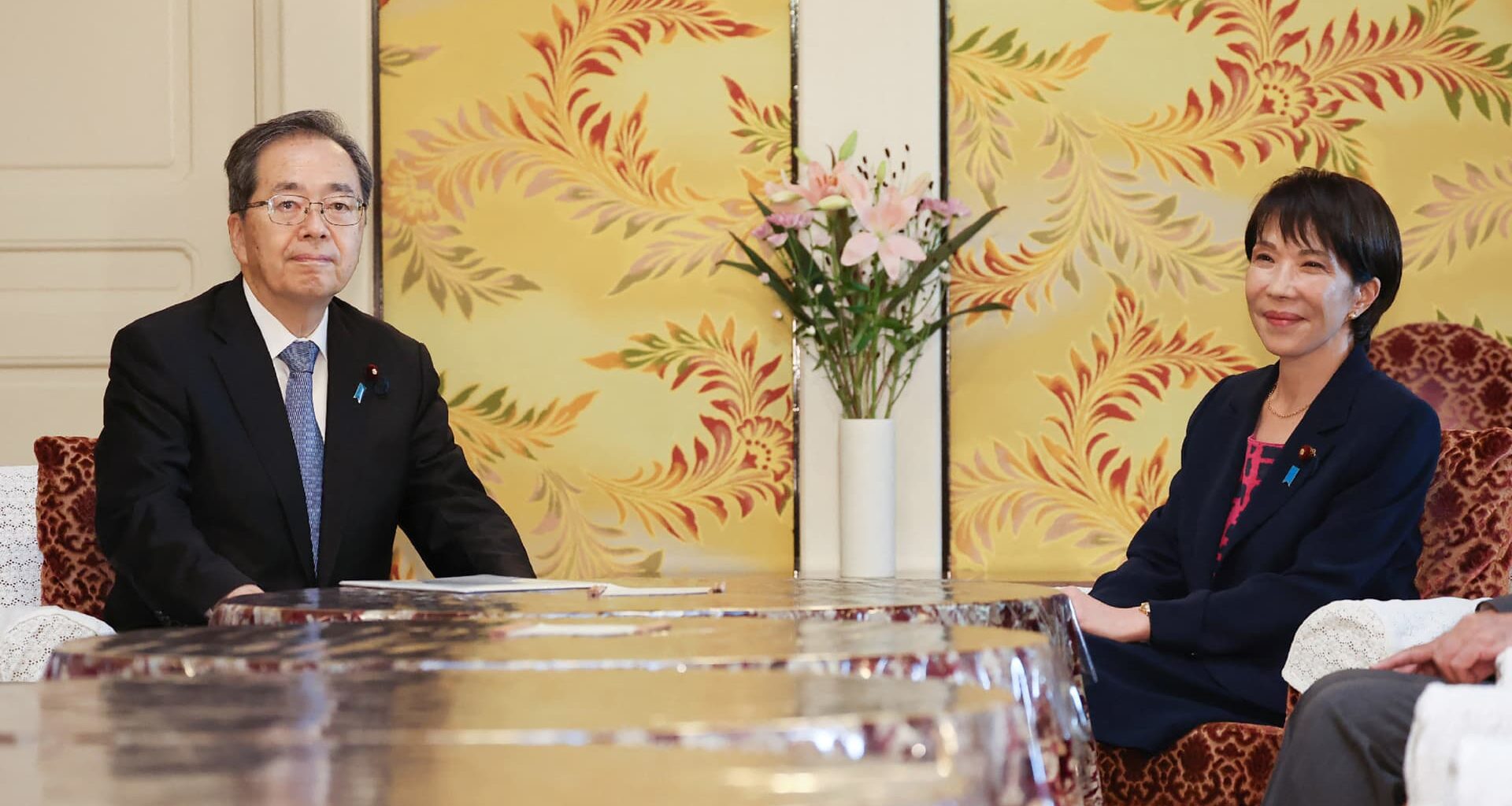Japan’s Liberal Democratic Party (LDP) President Sanae Takaichi (R) and Komeito Party leader Tetsuo Saito attend a meeting of party leaders at the Diet in Tokyo on October 10, 2025.
Str | Afp | Getty Images
Japan’s Komeito political party is reportedly quitting the country’s ruling coalition led by the Liberal Democratic Party, a move that could derail Sanae Takaichi’s path to becoming the country’s first female prime minister.
Komeito Chief Representative Tetsuo Saito said that the LDP “failed to provide sufficient answers regarding political funding issues,” after meeting with LDP President Sanae Takaichi, public broadcaster NHK said Friday.
If confirmed, the split would end a political alliance that has existed since 1999. It comes just days before an Oct. 15 parliamentary vote to select Japan’s next prime minister.
Nikkei reported earlier Friday that Komeito had reservations about the alliance, and that the appointment of Takaichi as Japan’s next prime minister would be delayed to at least Oct. 20.
Jesper Koll, expert director at Monex Group, said Komeito has “outlived its purpose” for the LDP, pointing out that the party has been losing supporters steadily for the past decade.
“Any political strategist agrees that in 3-5 years time, the Komeito will likely be de facto irrelevant,” Koll said. “Takaichi is forcing the issue, and thereby actually laying the direction for a new LDP.”
Takaichi won the LDP leadership race on Oct. 4, defeating farm minister Shinjiro Koizumi to become the first woman to lead the party — and potentially Japan’s first female prime minister.
Her victory follows Prime Minister Shigeru Ishiba’s resignation announcement on Sept. 7, after the LDP lost its majority in both houses of parliament in 2024 and 2025, leaving it to govern as a minority.
The hardline conservative has been widely labeled as an apostle of “Abenomics,” the economic strategy of the late prime minister Shinzo Abe, which espoused loose monetary policy, fiscal spending and structural reforms.
Following the news, the yen strengthened to 152.64 against the dollar, partially unwinding the so-called “Takaichi trade” that had driven the yen past the 150 mark and sent Japanese equities to record highs. The announcement came after markets closed in Japan.
Stock Chart IconStock chart icon
USD/JPY
While the withdrawal of Komeito from the political alliance may appear to be damaging for Takaichi and the LDP, she remains on course to be Japan’s first female prime minister, Naka Matsuzawa, Chief Strategist at Nomura Securities, said.
The opposition parties are not united to vote for someone else, Matsuzawa added. “For the time being, her government will have to shop for different partners depending on [the] bills it wants to pass.”
The LDP and Komeito currently hold 215 seats in the 465-seat chamber, short of the 233 seats needed for a majority.
Komeito’s exit would leave the LDP with 191 seats, though the LDP is still the largest party in the Lower House.
Saito said Komeito would not back Takaichi in the parliamentary vote on the next prime minister, according to a report by Reuters.
Her rise comes at a time of economic strain at home and tense relations abroad — and tests whether Japan doubles down on the conservative, pro-Abenomics agenda that defined the past decade.
Takaichi has called for a hardline stance towards China and is also in favor of revising Japan’s pacifist constitution, especially Article 9, which renounced Japan’s right to wage war.
Her previous visits to the controversial Yasukuni Shrine, which honors Japan’s war dead, including war criminals, have drawn criticism from China and South Korea, which see the site as a symbol of Tokyo’s wartime aggression.


